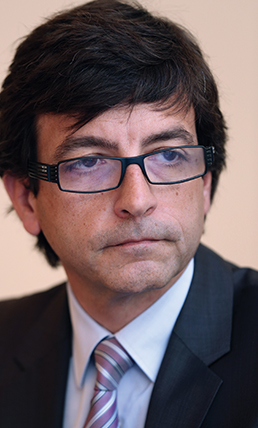Andorra is back on a growth path. Indicators at the Pyrenean country nestled between France and Spain show the economy has left its five years of recession behind it.
Employment in the co-principality was up 1.6% in the 10 months to October 2016, unemployment was 0.6 percentage points lower in the fourth quarter of 2016 than in the previous year (at 4%), while goods exports were higher in 2016 at 12.6% and all-important tourist figures were also higher.
The 6.3% rise in tourists in 2016 is especially crucial for Andorra, which strongly relies on visitors to its mountains and ski resorts.
GDP bounce
“In 2016, the Andorran economy made another step towards economic consolidation with an estimated gross domestic product [GDP] growth of 1.6%,” says Andorran finance minister Jordi Cinca.
The percentage of GDP growth in 2016, if still low, was vital for the country after Andorra had faced a hit to its two largest contributors to GDP – tourism and banking – in the previous eight years. First, the global economic downturn following the financial crisis in 2008 caused tourist numbers from neighbouring Spain and other countries to slow significantly and turned Andorra’s comfortable economic growth negative.
Having only just recovered, posting a 0.4% uptick in GDP in 2013, followed by 2.3% in 2014, the country was hit again in 2015 by a case of alleged money laundering by Banca Privada d’Andorra (BPA). This caused a drop in growth to 0.8%.
So following years of pressure on GDP, 2016’s turnaround was critical. “The numbers also show that the economy was able to deal with the BPA crisis and move on from these events,” says Mr Cinca. “What happened has had some impact on investment, but now it is not an obstacle for our economy.”
A new focus
Still, with the banking sector contributing about 20% to Andorra’s GDP and the significantly large impact of tourism, the country had to rethink its economic model.
A tourism industry that focused mainly on low-cost, high-volume visitors changed its strategy to provide more high-quality accommodation and attract a different clientele. This, as well as an increased tourism budget by the government of Antoni Martí Petit, helps promote Andorra as an attractive tourism destination throughout the year, not just during the country’s busiest season in the winter months.
Minister of tourism and commerce Francesc Camp says: “The occupation in the winter months is OK, at more or less 80%. In the summer months, we have about 50% to 60% of occupation but in spring and autumn it is less than 50%.” The increased budget enables more work with tour operators in the UK, Portugal and the Benelux countries, he adds, while funds are also invested in big sporting and cultural events in both winter and summer.
Two of the world’s biggest road cycle races, the Tour de France and Spain’s equivalent, La Vuelta, are now regular visitors to Andorra. The Tour cycled through Andorra’s streets in 2016, enticing cycling enthusiasts to stay for three days, while La Vuelta last stopped in Andorra in 2015 but will again visit for two days this year.
And Andorra has more in store, according to Mr Camp. “In the low season, we are especially promoting our shopping sector, spa and wellness services, and the Pyrenean gastronomy,” he says.
He adds that the government is seeking to invest in a new multi-functional venue, which will enable Andorra to host more shows, concerts and festivals, and is launching a tender for a new casino. Meanwhile, in July, it is hosting a unique staging of 22 Cirque du Soleil shows.
Diversity for future growth
Yet there is a need for still further diversification. A step towards internationalisation in 2012 now allows foreign businesspeople to own the entire capital of an Andorra-registered company, not just the maximum 49% permitted under previous legislation. The expectation is that this change will help attract more investors to areas such as advanced services and industry (higher education, advanced medicine and so on), as well as technology.
Fitch Ratings expects the economy to expand by 1.5% in 2017 and 2% in 2018, on the back of the falling unemployment and rising tourist numbers seen in 2016, whereas Mr Cinca forecasts 2017 GDP growth between 1.5% and 2%.
“We are living in important times for our country,” says Marc Pantebre, the president of Andorra’s Chamber of Commerce. “We have seen the opening of our economy [to allow international investors], we are out of recession, we are trying to find new activities to boost our economy and we are becoming more transparent internationally. All this makes Andorra more sellable abroad.”












